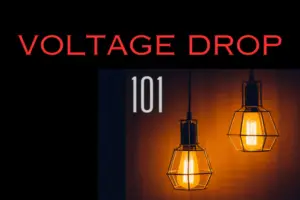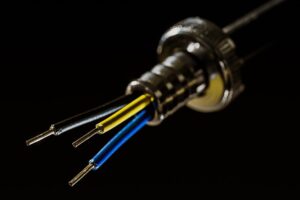Extension cords are a common tool used to provide power to electrical devices in areas where outlets are not easily accessible.
However, when using extension cords in conjunction with Ground Fault Circuit Interrupters (GFCIs), it is important to consider the quality and safety of the extension cord being used.
A low-quality extension cord with substandard insulation, inadequate wire gauge, or faulty grounding can introduce increased resistance, voltage drops, and imbalances. These irregularities can trigger the GFCI, causing it to trip and shut off power to the connected devices.
This article explores the potential risks and hazards associated with low-quality extension cords and their impact on GFCIs.
Understanding GFCI
Ground Fault Circuit Interrupters, commonly known as GFCIs, are electrical safety devices designed to protect against electric shocks and electrical fires.
They monitor the flow of electricity in a circuit and quickly shut off power if a ground fault or imbalance is detected.
GFCIs play a critical role in preventing electrical accidents and are typically installed in areas where moisture or water is present, such as kitchens, bathrooms, and outdoor locations.
Extension Cords and Safety
Extension cords are flexible cables used to extend the reach of electrical power from an outlet to a device. They come in various lengths and configurations to accommodate different needs.
While extension cords provide convenience, they also introduce potential risks if not used properly.
Common hazards associated with extension cords include overheating, overloading, and physical damage to the cord itself.
GFCI and Extension Cord Compatibility
To ensure the safety of electrical devices connected through an extension cord, it is important to consider the compatibility between the extension cord and the GFCI.
Certain factors influence this compatibility, such as the wire gauge, ampere rating, and grounding. A high-quality extension cord designed for heavy-duty applications and equipped with proper grounding will typically work well with GFCIs, minimizing the risk of tripping.
Effects of Low-Quality Extension Cords on GFCI
Using a low-quality extension cord with a GFCI can increase the risk of tripping and pose potential electrical hazards.
Low-quality cords may have inferior insulation, inadequate wire gauge, or faulty grounding. These factors can lead to increased resistance, voltage drops, and electrical imbalances, triggering the GFCI to trip even when no actual ground fault is present.
Factors Contributing to GFCI Tripping
Several factors can contribute to GFCI tripping when using extension cords, regardless of their quality.
Overloading the extension cord by connecting too many devices or exceeding its ampere rating can cause the GFCI to trip.
Faulty wiring within the extension cord or devices can also lead to ground faults and trigger the GFCI. Additionally, physical damage to the cord, such as cuts, fraying, or exposed wires, increases the risk of electrical faults and GFCI tripping.
Read also my article: Power up your toaster: Can you use an extension cord?
Ensuring GFCI Safety with Extension Cords
To maintain GFCI safety when using extension cords, it is crucial to follow certain guidelines. Firstly, choose high-quality extension cords that are appropriate for the intended use, with a suitable wire gauge and ampere rating.
Inspect the cord regularly for any signs of damage and replace it if necessary. Avoid overloading the extension cord and distribute the load evenly among multiple outlets if needed.
Finally, ensure proper grounding of both the extension cord and the connected devices.
Conclusion
While extension cords can provide convenient access to electrical power, using low-quality cords in conjunction with GFCIs can introduce potential risks and hazards.
It is important to prioritize safety by using high-quality extension cords, inspecting them regularly for damage, and adhering to the appropriate load capacity.
By ensuring compatibility and following safety guidelines, we can minimize the risk of GFCI tripping and create a safer electrical environment.


